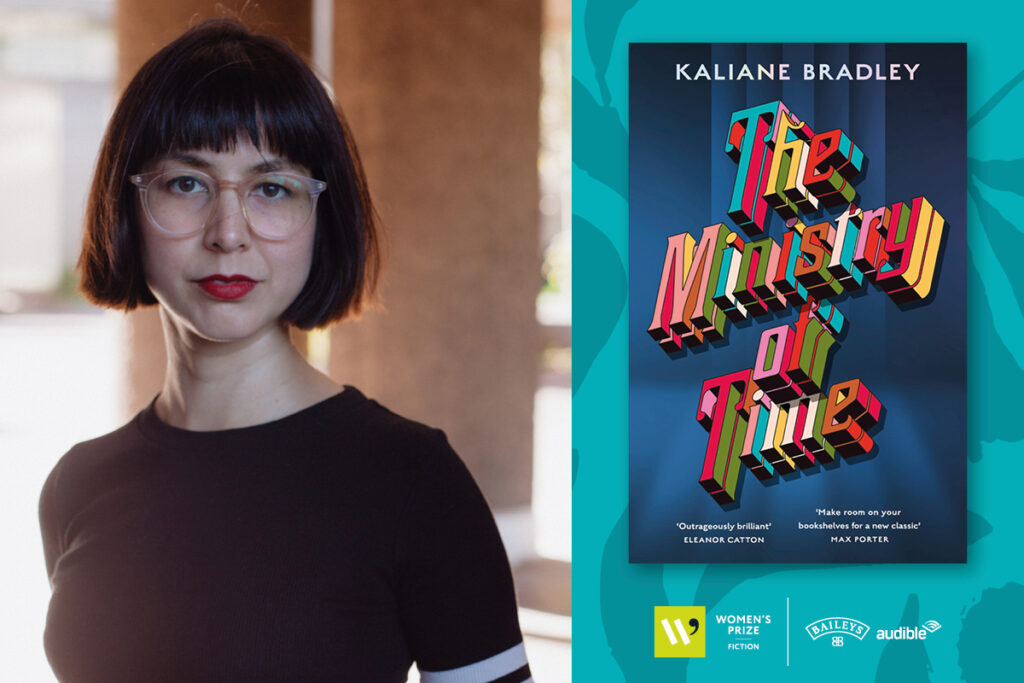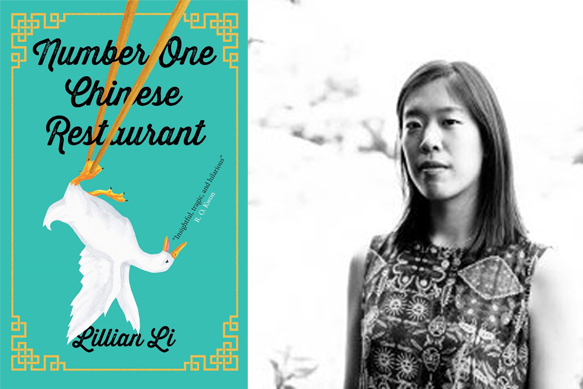In The Ministry of Time by Kaliane Bradley, a different kind of asylum seeker is plucked from his own time and brought to present day Britain in the name of research. The book blends science-fiction, fascinating historical perspectives, and romance to explore the legacy of imperialism.
Longlisted for the 2025 Women’s Prize for Fiction, judge Deborah Joseph says: ‘This is a genre-bending novel, which combines sci-fi, romance, a spy thriller, fantasy and historical fiction. It tells the story of a civil servant who falls in love with a man from 1847 who is brought into the present via a time machine. The Ministry of Time is addictive, propulsive and a total joy to read.’
To find out more about the book we spoke to Kaliane about her inspirations, writing process and favourite books.
How would you describe your book to a new reader?
A tragicomic time-travel romance about empire, bureaucracy and cigarettes. A newly established government ministry needs to test what time-travel might do to the human body and brain, so they drag people from history into the 21st century. Each of these ‘expats’ is assigned a ‘bridge’ – a civil servant who will monitor, aid, live with and report on them. The book is narrated by the bridge assigned to the expat known as Graham Gore, a formally doomed polar explorer. But as she grows closer to him, and begins to question her own complicity in this project of assimilation, the true goals of the time-travel experiment emerge.
What was the idea that sparked your novel?
After watching a TV series called The Terror, which is about Franklin’s lost 1845 expedition to the Arctic, I became intensely invested in this doomed endeavour (two ships and 129 men were dispatched by the British Admiralty to find the Northwest Passage and none of them returned). I became specifically invested in one of the officers, a man called Graham Gore, who is a bit of a footnote in history but has a dashing daguerrotype on his Wikipedia page. I wrote the first version of the book for some friends and fellow polar exploration enthusiasts, who were nice enough to listen to me ramble about this otherwise unimportant historical figure.
Which part of the book did you write first? Was there a moment that clicked a lot of things in place or where you felt the strands of the book started to come together?
The first scene I ever wrote was the handover at the Ministry, when Graham Gore is first introduced to the bridge. This was where the novel originally started (!).
The dinner party scene was the moment I realised I knew all of these ‘expats’ intimately and could imagine their lives outside of the timeline of the book. Thank goodness for fictional martinis.
Which part of the book was the most fun to write? Which was the most challenging?
It was fun, easy and hilarious to write teaching an early Victorian man to ride a bike. I didn’t learn to ride a bike until I was 26 so I really felt for him.
It was a challenge to decide what sort of narrative context a reader would need to understand some of the decisions, informed by a mixture of present fear and inherited trauma, that the bridge makes in the book. I didn’t want to write a character who mapped directly onto my own experiences either as a mixed-race woman or a woman with Cambodian heritage, but I did want her to feel psychologically realistic.
What is the best piece of writing advice you have ever received?
‘Only write the fun parts.’ This is also now the main advice I give to other people.
Which female author would you say has impacted your work the most?
Angela Carter
Could you reveal a secret about your creative process?
I can’t write in public because I mutter to myself and, in really dire descriptive straits, gesture madly as I try to conjure the appropriate word or feeling out of the air. I’m sure if I treated the act of writing as a multi-media contemporary dance piece I would produce something very interesting, but I’d write a sentence every six days so maybe not.









